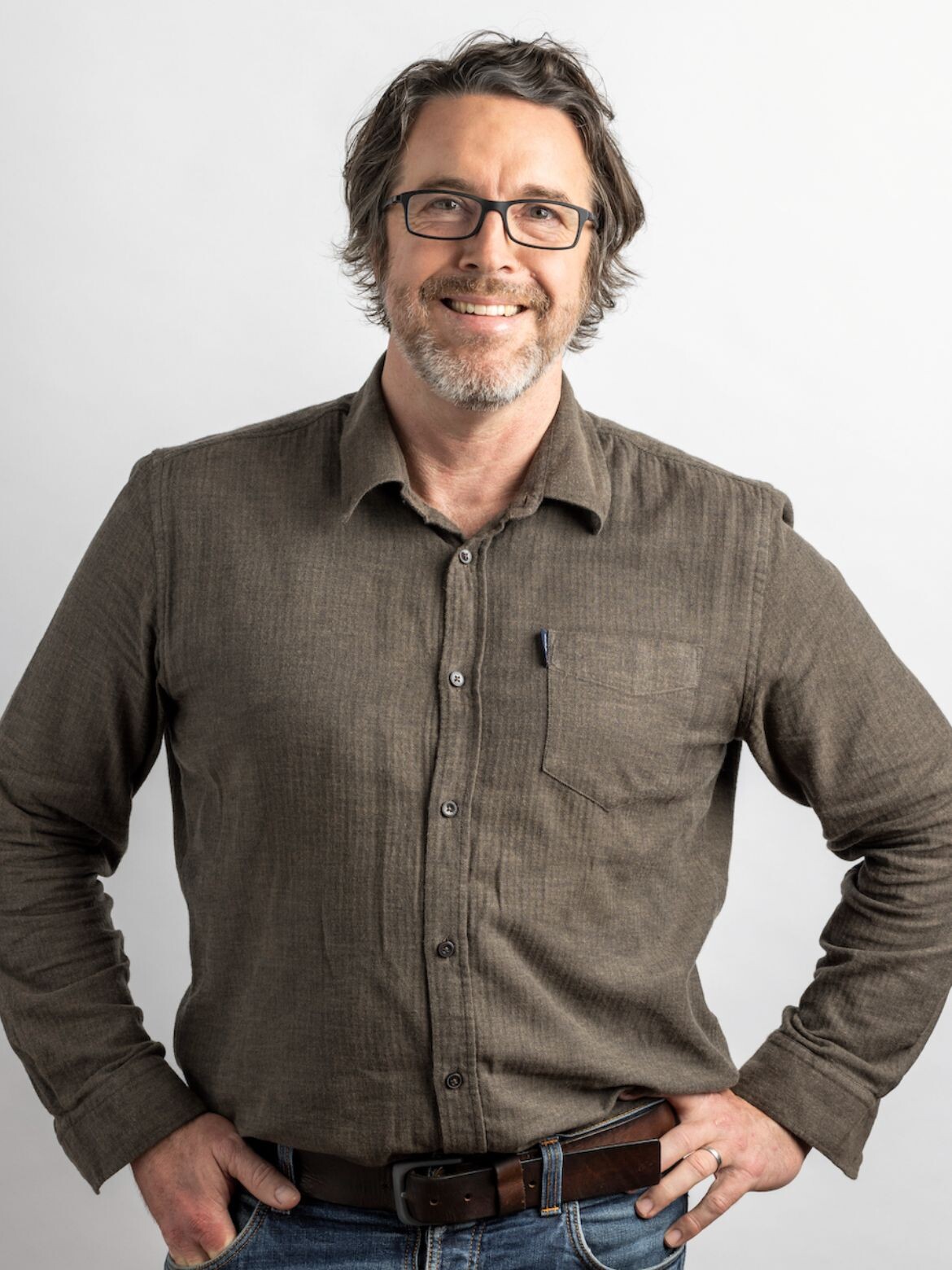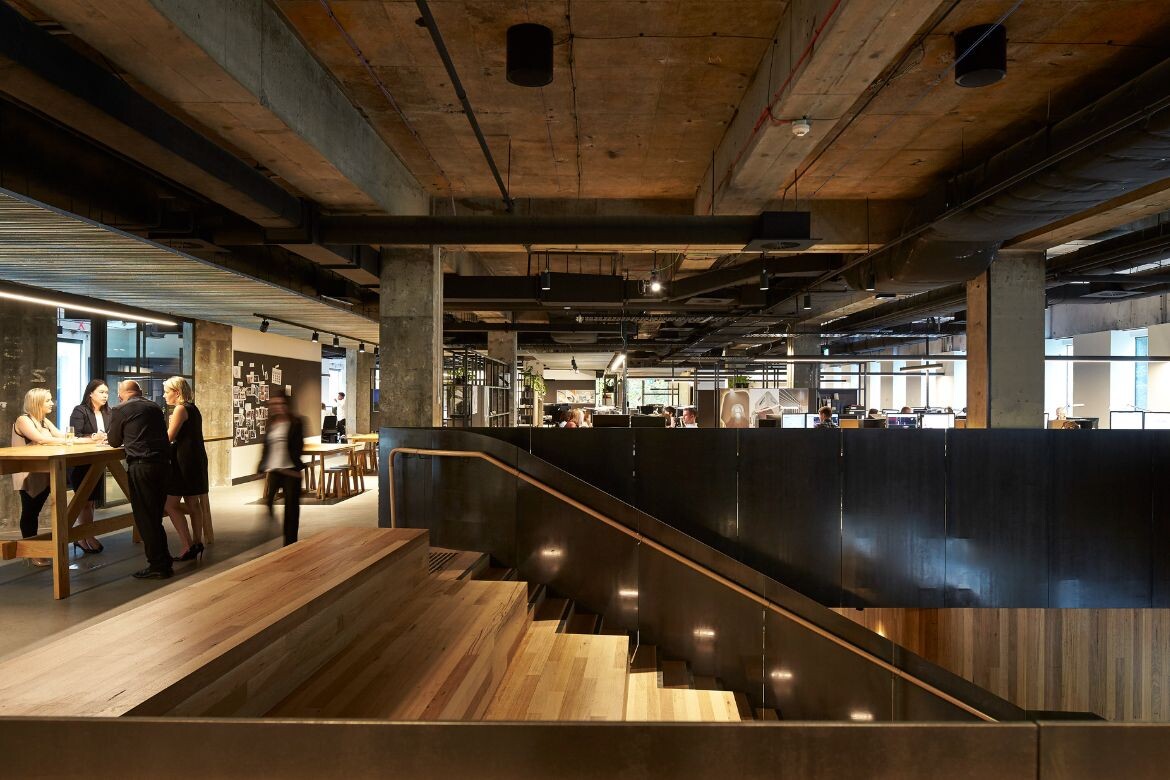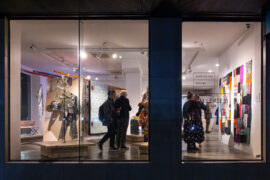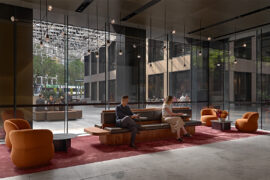We are all settling into a new way of working now that the pandemic is somewhat behind us. However, changes are occurring within the very structure of work itself across the architecture and design community, with flexibility, health and wellbeing taking centre stage.

WoWoWa, photograph by Peter Bennetts.
April 18th, 2023
These days it’s wise to check the signature of many who are employed in architecture and design practices to ascertain when someone is officially ‘in the office’ and contactable. Whether it’s a four-day week, a day off once a month or something in between, meeting personal needs is gaining traction in the working world. In an environment where working long office hours is generally expected, it’s interesting to see that some architectural practices have moved in the opposite direction and have changed days and hours to accommodate a whole new regime. Of course, one could argue that if an employee is happy and healthy then they will be more productive and then it’s a win-win for all involved.
We spoke to four architecture and design practices to gain insight into some of the new working dynamics that are occurring at the moment. While the pandemic influenced thinking and pushed some studios to make changes that would not have been contemplated a few years ago, it’s also obvious that key above all is flexibility or, at the very least, some personal ownership of one’s working hours.

Sam Crawford Architects (SCA) is one practice that has instigated a nine-day fortnight, finding the sweet spot between a four-day week and one day away from work each month. Tongue in cheek, the studio has named their day off ‘Mies Day’, in honour of architect Mies van der Rohe and his propensity for the idea that ‘less is more’. Principal of SCA, Sam Crawford, explains: “The main benefit has been staff wellbeing. I think that everyone is a little happier. Happy people collaborate more. Happy people get things done. Happy people rise to a challenge.
“I felt that a nine-day fortnight would be the right balance and suit our method of working and collaborating better than a four-day week. Our full time staff now work nine days per fortnight instead of ten, with no drop in pay. We all take the same second Friday off together, which makes it easier for staff to actually take the day off. We haven’t looked back.”
Related: Bara Bridge by Sam Crawford Architects

However, there is still the need to balance a client’s requirements and expectations with that of staff and this can be tricky, as Crawford clarifies: ”Of course, every industry has unique challenges — for us it was client contact and deadlines. Our clients have adjusted to it well. Public and commercial clients are used to the idea of a flexi day. Covid has taught private clients about flexible work arrangements. We all have mobiles and can always be contacted if there’s something really urgent.”
For Crawford and his team, the transition was very smooth with a six-month trial that allowed time for assessment before making a decision on whether or not to continue. Anonymous online wellbeing surveys have been conducted and the findings reveal that 100 per cent of staff agreed/strongly agreed that they felt less stressed working a nine-day fortnight, while 92 per cent agreed/strongly agreed they were able to manage their workload. So, the result is in and after 15 months of the new arrangement, this new working strategy is proving a success for this studio.

For DesignOffice’s directors Mark Simpson, Damien Mulvihill and their team, the conversation of changing work hours began in late 2021, instigated by the lockdowns in Melbourne. In consultation with the team, it was agreed to trial four working days 8am to 6.30pm, Monday to Thursday with Friday free of work. This was initiated and reviewed and more flexibility added in with the option for the team to shift some of their hours to the ‘off-line Friday’ with no calls or emails, purely to focus on design work.
Predominantly, the team work the four longer days but the option is always there to start these days later or finish them earlier in order to spend offline time on design-focused work on the Friday. The intent is to provide the opportunity for everyone to take a three-day weekend. On Thursdays, clients are contacted to make sure everything is working smoothly and only urgent calls are taken on Friday.
Simpson says that the team are enthusiastic about the new arrangements and the benefits are a time (on the Friday) for clear thoughts for design-focused work. Part time employees, notably those with children, feel more connected to the team. As Simpson says, “working three out of four days feels like they’re always there, whereas three out of five feels like part time.”

Although the team at DesignOffice are working the same number of hours, the model has been crafted to maximise the collective benefits. Output is more defined and focused and tweaks over the last year have aimed to find the best outcomes for all. Simpson adds: “Initially, we found that working 38 hours a week over four days didn’t work for everyone all of the time, so we’ve looked at restructuring the model to ensure we are all together in the studio Monday to Thursday from 9 to 5.30pm. Flexibility is provided in the balance of time around these core studio hours. It’s about providing a framework for meaningful personal choice and ensuring we’re focused on the best outcomes for our projects and our team.”

For WOWOWA Architecture there has been a different experience. Always the early adopters, in the last quarter of 2021 WOWOWA instigated a three-month trial of a four-day working week. The first six weeks were in Melbourne lockdowns and all went well as staff absolutely embraced the rest/rejuvenate day. When lockdown was over there were still six weeks of the trial, but things began to subtly change — it became too tiring to have a normal social life on the four big days. Incrementally the team dropped the four-day week requesting to return to a five-day week in the office.
Instead WOWOWA now champions the ‘Flex Calendar’ and for the 12 strong team with several mums, this was a more successful approach for ultimate work/life flexibility. Some people work from home when they need but most people prefer to be in the studio especially with initiatives such as ‘Fancy Lunch Fridays’.

Monique Woodward, director at WOWOWA, explains: “Without a systemic change to a four-day work week, we found what was most successful was the idea that anyone could just work and do appointments whenever they wanted in the day, or they could start early and finish early or they could move their schedules around. Director level flexibility for the win.”
Finally, global practice Woods Bagot has another perspective and at the heart is incredible flexibility. With 17 studios worldwide, Woods Bagot has instituted an overarching People and Culture program. The philosophy of ‘People Architecture’ is foremost for the practice, understanding and supporting the collective of people with a human-centric working policy.
Bronwyn McColl, principal in the Melbourne studio, explained that Woods Bagot has crafted two frameworks, Formal Flex and Informal Flex. Formal Flex encompasses the arrangement of working days and hours for part and full time staff, while Informal Flex is about the general day-to-day regime and working from the office or remotely. As well as these micro initiatives, there is also big picture planning, such as professional pathways for employees with options to work in the various areas of architecture and design within the studio or to locate to offices around the world as part of their Dynamic Careers.

McColl explains: “One of our fundamental core values is Collective Intelligence, based around our belief in our people and that we’re better together. We don’t subscribe to a founder firm approach or a single person as the originator of ideas — we are about us as a collective. In order for that to work, we have to have engaged, empowered people who love what they do and are passionate. Having a human-centric philosophy at our heart means our people are creating architectural design for people and it’s very much a human-centric process that focuses everything we do.”
The basic working premise is having core hours where everyone overlaps to ensure continuity, (10am to 4pm) but this, and the manner and place of working, can be adapted for the individual. Woods Bagot has a studio-based culture, and many in the Melbourne office have returned to work in the studio preferring the connection to others, the atmosphere of a creative environment and simply being in the studio. However, team leaders can support their members to find a work/life balance whether that is new parents those who study part-time or others who have various commitments to juggle, who require a mix of working at home and in the studio.

Communication with clients is key to finetuning all arrangements. Many of Woods Bagot’s clientele are sophisticated, very used to video conferencing, even before Covid, and understand that people work some days and not others. Leaders ensure that there is always overlap of people working on a team so that connectivity is assured.
Leadership is essential for the smooth organisation of multiple staff working a variety of days and hours and, to this end, a training framework for Project Leaders has been initiated to help everyone adjust to the dynamics. With a booking service that allows others to know what everyone is up to at any point of time, leaders leading by example and constant re-evaluation of how flexibility is embedded, Woods Bagot is supporting staff in order to gain the best working plan for everyone.

As McColl says, “When you’re in an organisation that has high performing teams, and it’s all about people, you do need to be prepared to continually seek feedback and tweak the process, as some things are going to work and some aren’t. What we’re learning is that you go through a change in process you need to bring people on that journey.”
While this article is simply a snapshot of the workings within a small sample of practices, the interesting aspect is that each workplace experience is being crafted to suit the individual whatever the size of the studio. One thing is certain though, flexibility is integral for everyone. Thing have definitely changed in a short period of time but it will be interesting to see how the working environment evolves in the coming years.
Sam Crawford Architects
samcrawfordarchitects.com.au
Design Office
designoffice.com.au
Wowowa
wowowa.com.au
Woods Bagot
woodsbagot.com
Photography
Various
We think you might also like this story on Cox Architecture’s new Sydney studio that embodies adaptable workplace design and sustainability.
INDESIGN is on instagram
Follow @indesignlive
A searchable and comprehensive guide for specifying leading products and their suppliers
Keep up to date with the latest and greatest from our industry BFF's!

How can design empower the individual in a workplace transforming from a place to an activity? Here, Design Director Joel Sampson reveals how prioritising human needs – including agency, privacy, pause and connection – and leveraging responsive spatial solutions like the Herman Miller Bay Work Pod is key to crafting engaging and radically inclusive hybrid environments.

Gaggenau’s understated appliance fuses a carefully calibrated aesthetic of deliberate subtraction with an intuitive dynamism of culinary fluidity, unveiling a delightfully unrestricted spectrum of high-performing creativity.

The Australian Design Centre (ADC) is facing a crisis as core funding cuts leave NSW without a government-funded organisation dedicated to craft and design practice.

Grimshaw has completed a revitalisation of Collins Place, adding new layers to an already historically and architecturally rich site in Melbourne’s CBD.
The internet never sleeps! Here's the stuff you might have missed

In this episode of SpeakingOut!, Jan Henderson sits down with Ben Lornie of PTID to dive into the immersive world of retail design.

Fine art that informs commercial design has authenticity and soul, and Ross Didier is at the forefront of creativity that is infused with passion.